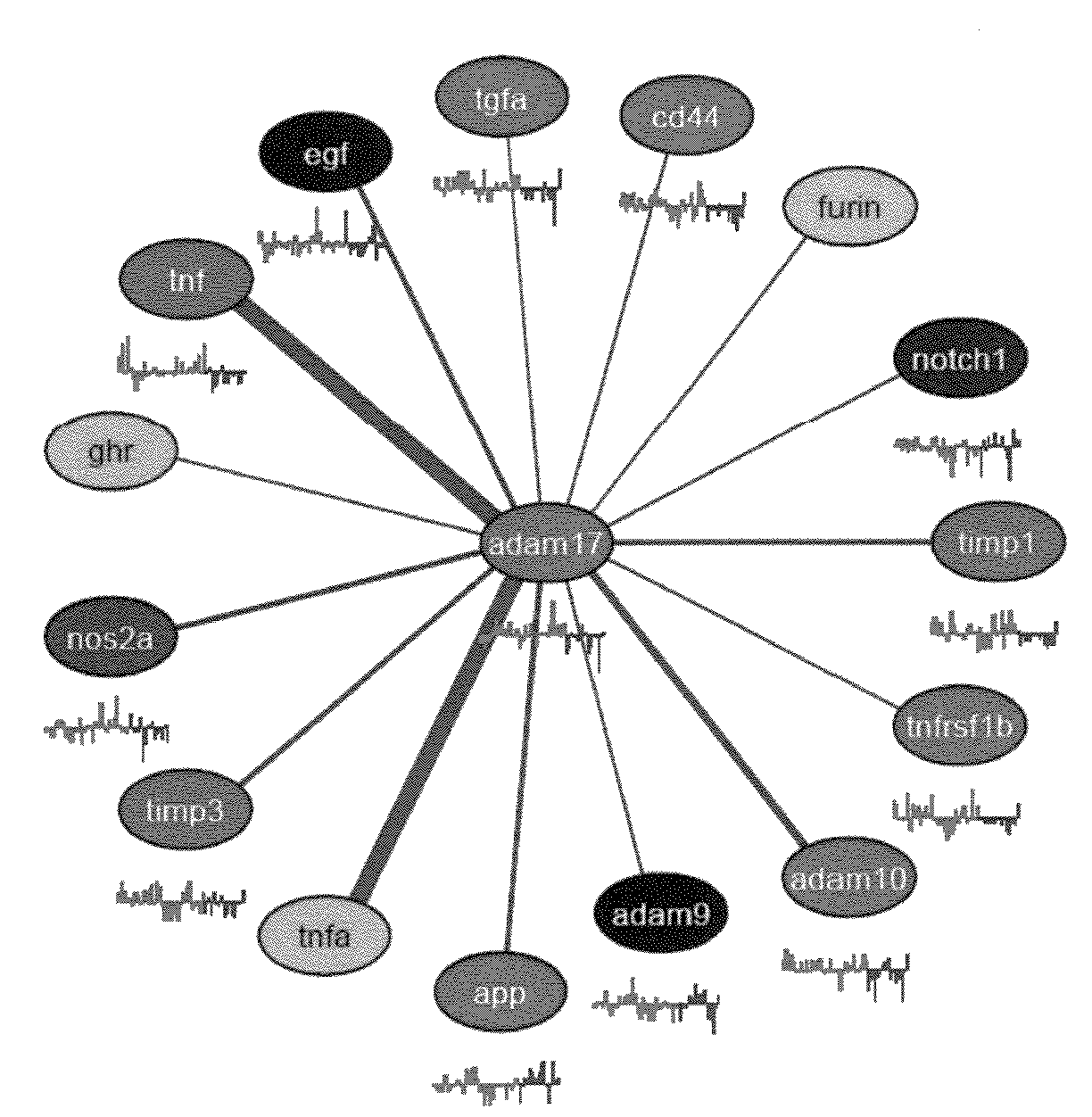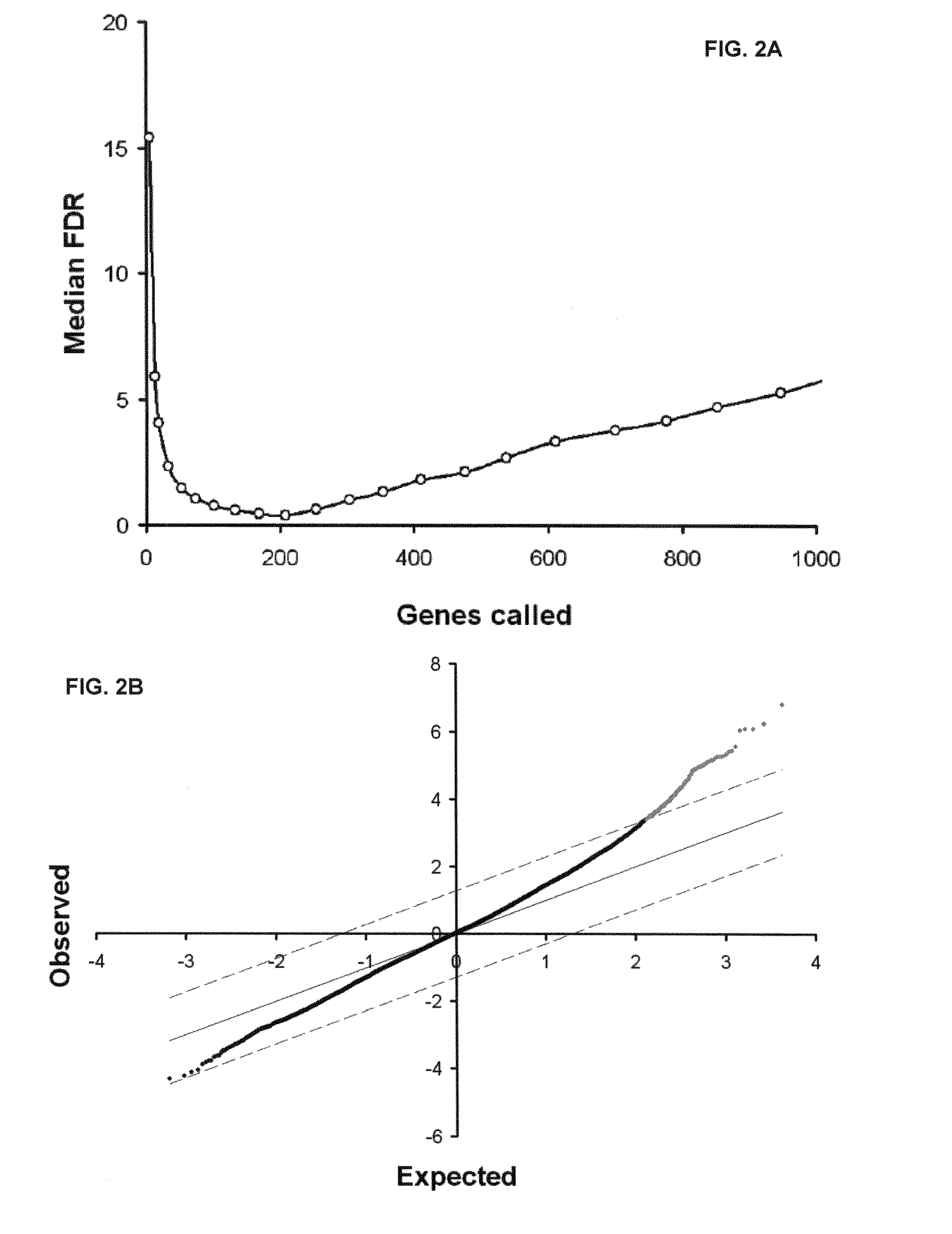Genes associated with restenosis
a technology of genes and restenosis, applied in the field of genes associated with restenosis, can solve the problems of restenosis, high recurrence rate, difficult treatment, etc., and achieve the effect of increasing neointimal hyperplasia, reducing the number of patients, and improving the quality of li
- Summary
- Abstract
- Description
- Claims
- Application Information
AI Technical Summary
Benefits of technology
Problems solved by technology
Method used
Image
Examples
example 1
[0104]We recruited 102 patients who underwent coronary atherectomy for de novo atherosclerosis or ISR. Samples were fixed for histology and near genome-wide gene expression was assessed using a dual dye 22 k microarray. Histological analysis revealed significantly greater cellularity and significantly fewer inflammatory infiltrates and lipid pools in the ISR group. Gene ontology analysis demonstrated that cell proliferation programs were prominent in the ISR group and inflammation / immune programs were prominent in the de novo group. Network analysis, which combines semantic mining of the published literature with the expression signature of ISR, revealed gene expression modules that are suggested as candidates for selective abrogation of restenotic disease. Two modules are presented in more detail, the procollagen type 1 alpha 2 gene (COL1A2) and the ADAM17 / TNF alpha converting enzyme gene. Finally, we tested our contention that this method is capable of identifying successful targe...
PUM
| Property | Measurement | Unit |
|---|---|---|
| diameter | aaaaa | aaaaa |
| temperature | aaaaa | aaaaa |
| temperature | aaaaa | aaaaa |
Abstract
Description
Claims
Application Information
 Login to View More
Login to View More - R&D
- Intellectual Property
- Life Sciences
- Materials
- Tech Scout
- Unparalleled Data Quality
- Higher Quality Content
- 60% Fewer Hallucinations
Browse by: Latest US Patents, China's latest patents, Technical Efficacy Thesaurus, Application Domain, Technology Topic, Popular Technical Reports.
© 2025 PatSnap. All rights reserved.Legal|Privacy policy|Modern Slavery Act Transparency Statement|Sitemap|About US| Contact US: help@patsnap.com



